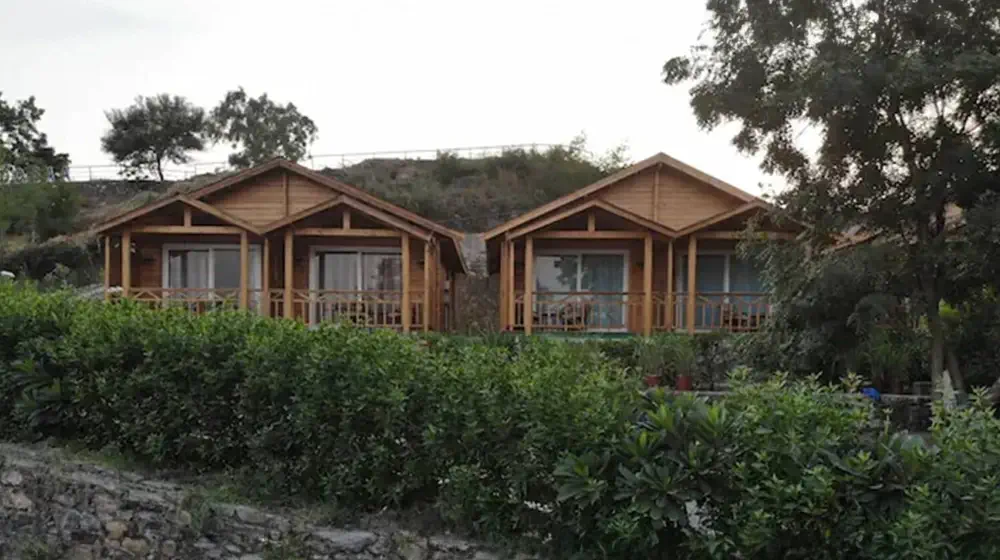The History and Evolution of Wooden Home: From Log Cabins to Modern Marvels
Wooden houses have been an integral part of human history, offering shelter, warmth, and a sense of home for centuries. From humble log cabins to sophisticated modern structures, the evolution of wooden homes is a testament to human ingenuity and adaptability. In this article, we will explore the rich history and evolution of wooden houses, highlighting key developments and innovations along the way. Additionally, we will discuss the role of wooden house manufacturers in India in shaping the future of this timeless architectural tradition.
The Beginnings: Early Log Cabins
The history of wooden home dates back to ancient civilizations, where early humans used available natural resources to construct their dwellings. Log cabins, one of the earliest forms of wooden houses, were built using logs laid horizontally and interlocked at the corners. This simple yet effective construction method provided sturdy and weather-resistant homes.
Origins: Log cabins have roots in Northern Europe, particularly in Scandinavian countries and Russia. These structures were introduced to North America by European settlers in the 17th century. The design was well-suited to the abundant forests and harsh climates of the New World, making log cabins a popular choice among pioneers and frontiersmen.
Construction: Early log cabins were typically single-room structures with a basic rectangular shape. The logs were often notched and fitted together without nails, using only the natural friction between the logs to hold them in place. The gaps between the logs were filled with clay, moss, or other materials to insulate the cabin and keep out the elements.
The Rise of Timber Framing
As woodworking techniques advanced, timber framing emerged as a more sophisticated method of constructing wooden houses. Timber framing involved creating a structural framework from large wooden beams, which were joined together using intricate joinery techniques.
Medieval Europe: Timber framing became prevalent in medieval Europe, particularly in countries like England, Germany, and France. The exposed wooden beams and infill panels created distinctive architectural styles, such as the Tudor and half-timbered houses.
Durability and Flexibility: Timber framing offered several advantages over log cabins. The framework provided greater structural integrity, allowing for larger and more complex buildings. The infill panels, made from wattle and daub or brick, offered improved insulation and weather resistance.
The American Colonial Era
In the American colonial era, wooden home evolved to reflect the diverse cultural influences and regional variations of the growing colonies. Timber-framed houses continued to be popular, but new styles and innovations emerged.
Saltbox Houses: One notable style was the saltbox house, characterized by a long, pitched roof that slopes down to the back. This design maximized living space and provided added protection against harsh weather.
Georgian Architecture: Influenced by European trends, Georgian architecture introduced symmetry, proportion, and decorative elements to wooden houses. These homes featured gabled roofs, sash windows, and elaborate cornices, reflecting the increasing affluence of colonial society.
The Industrial Revolution and Prefabrication
The Industrial Revolution brought significant changes to the construction of wooden houses. Advances in sawmilling and transportation made lumber more accessible and affordable. Prefabrication, the process of manufacturing building components off-site, began to take hold.
Balloon Framing: Invented in the early 19th century, balloon framing revolutionized wooden home construction. This method used long, continuous wooden studs that ran from the foundation to the roof, providing a lightweight and flexible framework. Balloon framing made wooden houses faster and cheaper to build, leading to a boom in residential construction.
Prefabricated Homes: The concept of prefabrication gained popularity in the mid-19th century. Companies like Sears and Roebuck offered mail-order kits for wooden houses, allowing homeowners to assemble their homes using pre-cut and numbered pieces. This innovation democratized homeownership and introduced standardized designs.
Modern Wooden Houses
Today, wooden houses continue to evolve, blending traditional craftsmanship with modern technology and design principles. Modern wooden homes are characterized by their sustainability, energy efficiency, and aesthetic appeal.
Sustainable Building: Wooden houses are inherently eco-friendly, as wood is a renewable resource. Modern construction practices emphasize sustainable forestry, energy-efficient designs, and the use of environmentally friendly materials. These practices reduce the carbon footprint of wooden homes and promote environmental stewardship.
Architectural Innovation: Contemporary wooden home showcase a wide range of architectural styles, from minimalist designs to intricate, custom-built structures. Innovations like cross-laminated timber (CLT) and engineered wood products allow for greater flexibility and creativity in design. These materials enhance the strength and durability of wooden houses, making them suitable for both residential and commercial applications.
Wooden House Manufacturers in India
India has a rich tradition of wooden architecture, with historic wooden temples, palaces, and homes found across the country. Today, wooden house manufacturers in India are embracing modern techniques and sustainable practices to create beautiful and durable homes.
Wood Barn India: Known for their eco-friendly practices and high-quality craftsmanship, Wood Barn India offers a range of wooden homes that combine traditional aesthetics with modern amenities. Their designs emphasize energy efficiency and sustainability, making them a popular choice among environmentally conscious homeowners.
Conclusion
The history and evolution of wooden houses reflect the ingenuity and adaptability of human beings. From the early log cabins of Northern Europe to the modern wooden marvels of today, wooden homes have continually adapted to changing needs, technologies, and environmental concerns. By choosing a reputable wooden house manufacturer in India, homeowners can enjoy the timeless beauty and sustainability of wooden houses, ensuring a legacy that can be passed down through generations.
Embrace the rich history and promising future of wooden houses, and discover the unparalleled charm and benefits of living in a wooden home. With proper care and attention, your wooden house can become a cherished part of your family’s heritage, providing comfort and beauty for many years to come.
May You Like :
From Log Cabins To Contemporary Wooden Homes: An Evolution
Innovative Wooden House Interiors: Creating Cozy And Stylish Spaces



